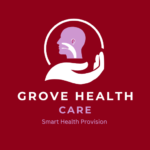Radiotherapy and Chemotherapy In Head And Neck Cancers

THE CELL CYCLE AND RADIOTHERAPY/ CHEMOTHERAPY:
The cell-cycle has the following phases
- Go: Resting phase
- G1: Growth phase
- S: Synthesis phase
- G2: Phase of growth and preparation for mitosis
- M: Phase of mitosis.
Radiotherapy tends to affect the G2 and M phases, while CHEMOTHERAPY affects G1, S, G2 and M phases.
What is Radiotherapy?
Radiotherapy, also known as radiation therapy, is a treatment modality that uses high-energy radiation to kill cancer cells.
Overview of the principles of radiotherapy in the management of head and neck cancers:
Types of Radiotherapy
Here are the types of Radiotherapy:
-
1. External Beam Radiation Therapy (EBRT)
Delivers radiation from outside the body.
-
2. Internal Radiation Therapy (Brachytherapy)
Places radioactive material directly inside or near the tumor.
-
3. Stereotactic Body Radiation Therapy (SBRT)
Delivers high doses of radiation to small tumors.
-
4. Intensity-Modulated Radiation Therapy (IMRT)
Uses advanced technology to deliver precise doses of radiation.
Modes of Delivery of Radiotherapy
1. Conventional Fractionation: Delivers radiation in daily fractions, 5 days a week.
2. Hyperfractionation: Delivers smaller doses of radiation more frequently.
3. Accelerated Fractionation: Delivers radiation in larger doses, fewer times a week.
Cell Cycle and Mechanism of Action of Radiation Therapy
1. Cell Cycle: Radiation affects cells in the G2 and M phases of the cell cycle.
2. DNA Damage: Radiation causes DNA damage, leading to cell death.
3. Apoptosis: Radiation induces apoptosis, or programmed cell death.
Side Effects of Head and Neck Radiation Therapy
1. Xerostomia: Dry mouth due to salivary gland damage.
2. Dysphagia: Difficulty swallowing due to esophageal damage.
3. Mucositis: Inflammation of the mucous membranes.
4. Dermatitis: Skin reactions, including redness and itching.
5. Hearing Loss: Radiation-induced hearing loss.
Management of Side Effects of Radiotherapy
1. Xerostomia: Salivary gland substitutes, fluoride treatments, and saliva-stimulating medications.
2. Dysphagia: Dietary modifications, swallowing exercises, and feeding tubes.
3. Mucositis: Topical anesthetics, pain management, and mucosal protectants.
4. Dermatitis: Topical creams, skin care, and wound management.
5. Hearing Loss: Hearing aids, cochlear implants, and auditory rehabilitation.
What is Chemotherapy?
Chemotherapy is a treatment modality that uses chemical agents to kill cancer cells.
Overview of the principles of chemotherapy in the management of head and neck cancers:
Types of Chemotherapy
Here are the types of Radiotherapy:
-
1. Cytotoxic Chemotherapy
Kills cancer cells by interfering with cell division.
-
2. Targeted Chemotherapy
Targets specific molecular pathways involved in cancer growth.
-
3. Immunotherapy
Stimulates the immune system to recognize and attack cancer cells.
Modes of Delivery of Chemotherapy
1. Intravenous (IV) Chemotherapy: Delivered through a vein.
2. Oral Chemotherapy: Taken by mouth.
3. Intra-arterial Chemotherapy: Delivered directly into an artery that supplies the tumor.
4. Intraperitoneal Chemotherapy: Delivered into the abdominal cavity.
Cell Cycle and Mechanism of Action of Chemotherapy
1. Cell Cycle: Chemotherapy affects cells in the G1, S, G2, and M phases of the cell cycle
2. DNA Damage: Chemotherapy causes DNA damage, leading to cell death.
3. Apoptosis: Chemotherapy induces apoptosis, or programmed cell death.
Side Effects of Head and Neck Chemotherapy
1. Mucositis: Inflammation of the mucous membranes.
2. Dysphagia: Difficulty swallowing.
3. Xerostomia: Dry mouth.
4. Nausea and Vomiting: Gastrointestinal side effects.
5. Fatigue: Generalized weakness and fatigue
6. Hair Loss: Alopecia.
7. Hearing Loss: Ototoxicity.
Management of Side Effects of Chemotherapy
1. Mucositis: Topical anesthetics, pain management, and mucosal protectants.
2. Dysphagia: Dietary modifications, swallowing exercises, and feeding tubes.
3. Xerostomia: Salivary gland substitutes, fluoride treatments, and saliva-stimulating medications.
4. Nausea and Vomiting: Antiemetics, dietary modifications, and hydration.
5. Fatigue: Energy conservation, exercise, and psychosocial support.
6. Hair Loss: Scalp cooling, wigs, and hairpieces.
7. Hearing Loss: Hearing aids, cochlear implants, and auditory rehabilitation.
Note: The management of side effects should be individualized and guided by a multidisciplinary team of healthcare professionals.
Share Post On:
Recent Posts
-
Rigid Bronchoscopy for Retrieval of Foreign Bodies in Children
-
Foreign Body Impaction in the Larynx, Trachea, and Bronchi
-
Leadership Position is a Tool, not a Trophy
-
Carcinoma of the Oropharynx
-
Peritonsillar Abscess
-
Ethics of Doctor-Patient Relationship
-
Doctor-Patient Relationship Case Scenarios
-
Asymmetrical Tonsils and Approach to Evaluation and Management
-
Nasal Polyposis
-
Rigid Oesophagoscopy and Complication
-
Anatomy of Oesophagus
-
Stridor, Snoring, Stertor And Wheezing: How They Compare
-
Temporomandibular Joint (TMJ)
-
Otoacoustic Emissions
-
Tympanometry
-
Functional Endoscopic Sinus Surgery (FESS)
-
Tracheostomy
-
Clinical Voice Test (CVT) for Hearing Loss
-
Acute Epiglottitis And Approach To Management
-
Synoptic Overview Of Nasopharyngeal Carcinoma
-
Prioritizing Support For People With Disabilities Over Unhealthy Competitions That Marginalise The Downtrodden
-
Otitic Barotrauma
-
Titbits of Informed Consent Process for a Medical or Surgical Procedure
-
Comprehensive Overview of Mpox (Monkeypox)
-
Overview Of Corrosive Ingestion - Acid & Alkalis, and Management Approach
-
Ethical Conundrum
-
Comprehensive Overview of Laryngeal Papillomatosis and HPV Virus
-
All You Need To *Know About Gardasil*
-
Preauricular Sinus
-
Laryngomalacia - comprehensive overview
-
Flexible Laryngoscopy features of Laryngomalacia
-
Case Report of a Rare Cause of Upper Airway Obstruction In Adults
-
Usefulness of The Neck Soft Tissues X-Ray
-
Paranasal Sinuses Radiology
-
Swallow Function Test
Categories
Get in Touch
Read doctor-produced health and medical information written for you to make informed decisions about your health concerns.

